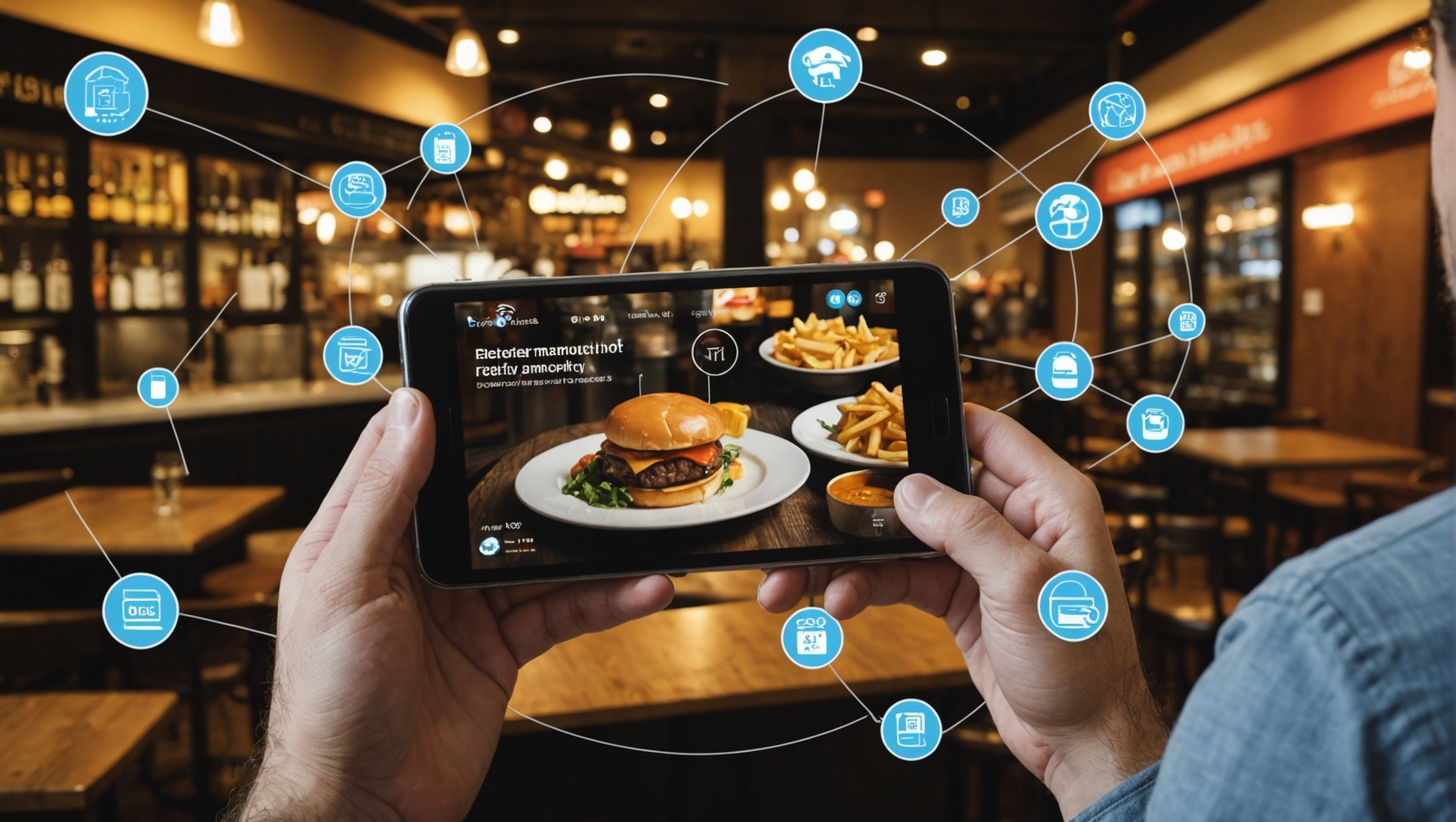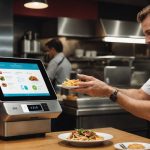Managing inventory across multiple restaurant locations is often complex and inefficient. However, the adoption of IoT devices is transforming this landscape, ensuring real-time data visibility. This technology not only streamlines operations but also optimizes stock levels, reduces waste, and enhances overall efficiency. Explore how leveraging IoT devices can revolutionize inventory management in multi-location restaurant chains, providing practical solutions tailored for modern challenges in the food service industry. Embrace this opportunity to stay ahead in a competitive market.
Overview of IoT in Inventory Management
In today’s fast-paced restaurant industry, the integration of IoT in inventory management has become a game-changer. IoT, or the Internet of Things, refers to interconnected devices that collect and exchange data in real time. This technology plays a crucial role in enhancing efficiency and accuracy in supply chains, especially for multi-location restaurant chains.
In the same genre : Revolutionizing Restaurant Hygiene and Efficiency: Innovative Ways to Implement Touchless Technology
IoT devices, such as smart sensors and RFID tags, provide precise tracking of inventory levels, ensuring that restaurants maintain optimal stock without over-ordering or understocking. This real-time data collection allows for better decision making, enabling businesses to respond swiftly to changes in demand or supply chain disruptions.
Moreover, IoT enhances customer satisfaction by ensuring that restaurants consistently have the necessary ingredients to offer a complete menu. This is particularly important for food safety and quality assurance, as IoT systems can monitor storage conditions to prevent spoilage.
Also to see : Revolutionizing restaurant ambiance: the benefits of led lighting for an unforgettable dining experience
Current trends in IoT technology for inventory management include the use of cloud-based platforms and data analytics. These solutions offer insights into consumption patterns and forecast future needs, further streamlining chain operations. By leveraging machine learning and artificial intelligence, restaurants can automate reordering processes and optimize logistics, ultimately boosting operational efficiency across the board.
Benefits of IoT Devices for Inventory Management
In the restaurant industry, the use of IoT devices in inventory management offers significant advantages. One major benefit is the enhanced real-time tracking and data accuracy provided by these technologies. By continuously monitoring inventory levels, IoT systems ensure that restaurants have the right amount of stock at all times, leading to improved supply chain management.
Moreover, IoT solutions contribute to a reduction in food waste and spoilage. With precise data on storage conditions and supply chains, restaurants can maintain food safety and quality, preventing unnecessary losses. This not only benefits the environment but also results in substantial cost savings for businesses.
Another key advantage is the improvement in labor efficiency and resource allocation. By automating routine tasks such as stock checks and reordering, IoT devices free up staff to focus on more critical operations. This optimization leads to better operational efficiency and ultimately enhances customer satisfaction.
By leveraging cloud-based platforms and data analytics, restaurants can further streamline their chain operations. These technologies provide insights into consumption patterns, allowing for informed decision making and more efficient logistics. The integration of machine learning and artificial intelligence in IoT systems is revolutionizing how the food and beverage industry manages its resources.
Case Studies of Successful IoT Implementation
Exploring the real-world applications of IoT in the restaurant industry reveals several success stories. Leading chains have leveraged IoT technology to revolutionize their inventory management and supply chains. For instance, a prominent fast-food chain implemented IoT systems to monitor inventory levels in real time. This resulted in a 20% reduction in food waste and a noticeable increase in customer satisfaction due to consistent menu availability.
Key metrics from these implementations highlight significant improvements in operational efficiency. By integrating cloud-based platforms and data analytics, these businesses achieved precise decision making and streamlined chain operations. This not only enhanced efficiency but also optimized logistics, reducing delivery time and costs.
Lessons learned from these case studies emphasize the importance of data-driven approaches. Successful restaurants have utilized artificial intelligence and machine learning to automate supply chain processes, improving overall chain management. Best practices include investing in robust IoT devices and ensuring seamless integration with existing POS systems.
These examples underscore the transformative potential of IoT in the food and beverage sector, offering valuable insights for other businesses aiming to enhance their operations.
Best Practices for Implementing IoT Solutions
Implementing IoT solutions in the restaurant industry requires a strategic approach to enhance inventory management and operational efficiency. Here’s a step-by-step guide to ensure a seamless integration within your business:
- Assessment and Planning: Begin by evaluating your current inventory systems and identifying areas where IoT can add value. This involves analyzing supply chains, inventory levels, and existing POS systems. A thorough assessment helps in making informed decision making.
- Selecting IoT Devices: Choose the right IoT devices and platforms that align with your restaurant’s needs. Consider devices that offer real-time data collection and are compatible with cloud-based solutions for enhanced data analytics.
- Staff Training and Change Management: Successful IoT integration hinges on effective staff training. Educate your team on new technologies and ensure they understand the benefits of IoT in improving customer satisfaction and food safety.
- Integration and Testing: Integrate IoT systems with existing chain operations and conduct thorough testing. This step ensures that the technology works seamlessly and enhances supply chain management.
- Monitoring and Optimization: Continuously monitor the performance of IoT systems and use artificial intelligence and machine learning to optimize logistics and chain management. Regular updates and maintenance are crucial for sustained efficiency.
Challenges and Solutions in IoT Inventory Management
In the restaurant industry, implementing IoT in inventory management presents unique challenges. One common obstacle is integrating IoT systems with existing POS systems and supply chains. This can lead to data inconsistencies and hinder operational efficiency. However, cloud-based platforms and data analytics can help synchronize these systems, ensuring seamless chain operations.
Another challenge is maintaining real-time accuracy in inventory levels. IoT devices must continuously monitor and update data to reflect current stock. Inaccuracies can result in food safety issues or customer dissatisfaction. Investing in robust technology and ensuring regular maintenance can mitigate these risks.
Security is also a concern, as IoT systems can be vulnerable to cyber threats. Protecting data and ensuring customer privacy is crucial. Implementing strong cybersecurity measures and keeping software updated can safeguard businesses against potential breaches.
To future-proof inventory management, restaurants should adopt machine learning and artificial intelligence. These technologies can predict trends and optimize supply chain processes, enhancing efficiency. By staying informed about IoT trends and continuously improving systems, restaurants can overcome challenges and maintain a competitive edge in the food and beverage sector.
Current Trends and Future Outlook
In the evolving restaurant industry, emerging technologies are reshaping inventory management. The integration of IoT devices continues to revolutionize how businesses monitor and manage their supply chains. A significant trend is the shift towards cloud-based solutions, which enable real-time data analytics and enhance decision making. Such platforms allow restaurants to maintain optimal inventory levels and improve operational efficiency.
Machine learning and artificial intelligence are at the forefront of these innovations, offering predictive insights into supply chain trends. These technologies facilitate chain management by automating processes, thus reducing the time and effort required for manual checks and adjustments. As a result, restaurants can ensure food safety and enhance customer satisfaction by consistently meeting demand.
Looking forward, the future of inventory management in the food and beverage sector will likely see further advancements in IoT systems. Continuous innovation is crucial for maintaining a competitive edge, with businesses needing to adapt to new software and systems. Embracing these IoT trends will not only streamline chain operations but also bolster efficiency and customer satisfaction. By staying ahead of technology innovations, restaurants can ensure their POS systems and supply chains remain robust and responsive to market changes.






